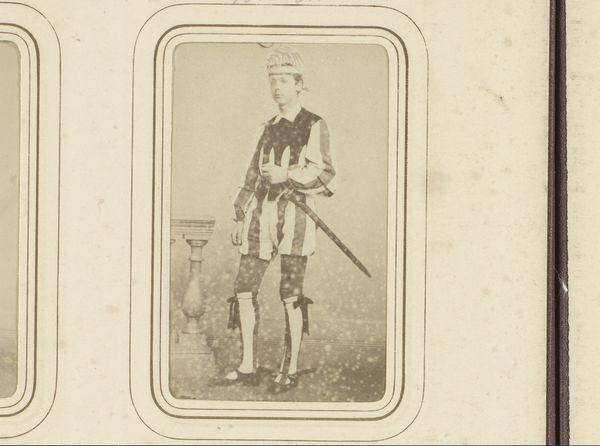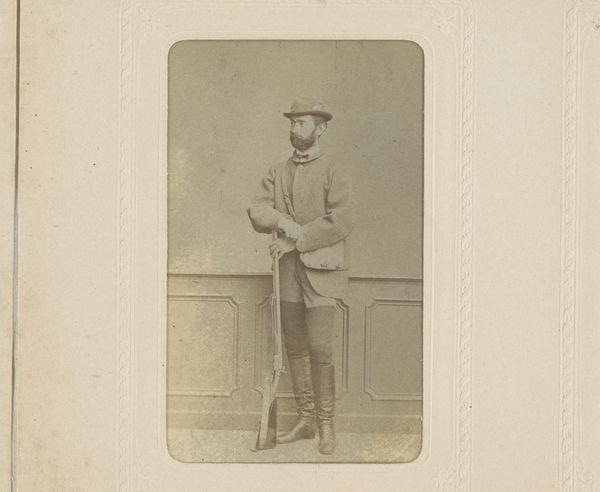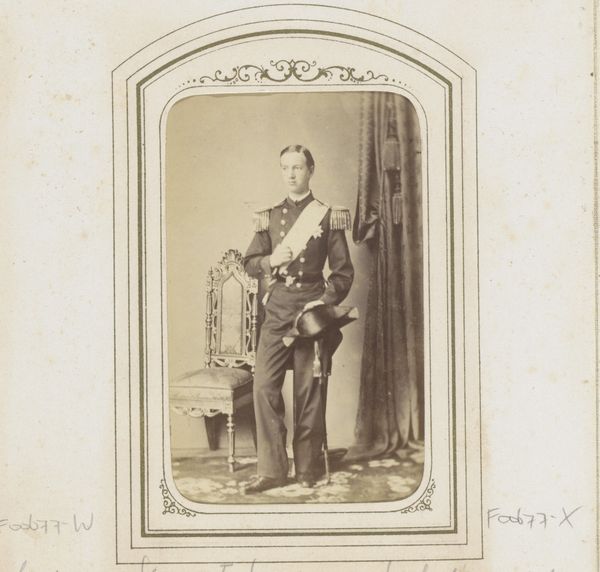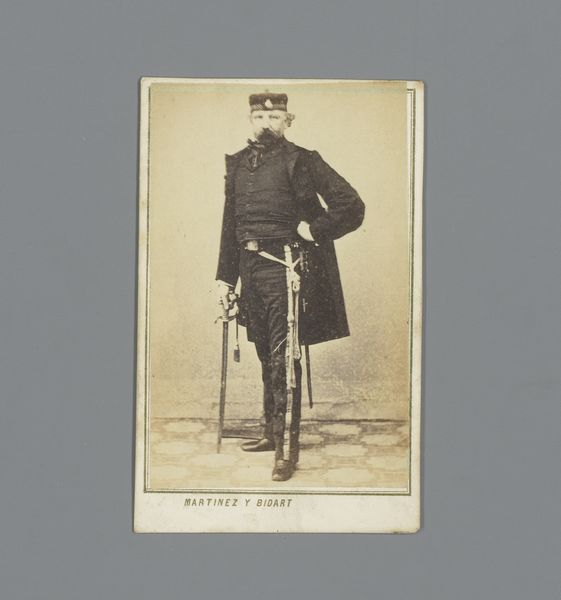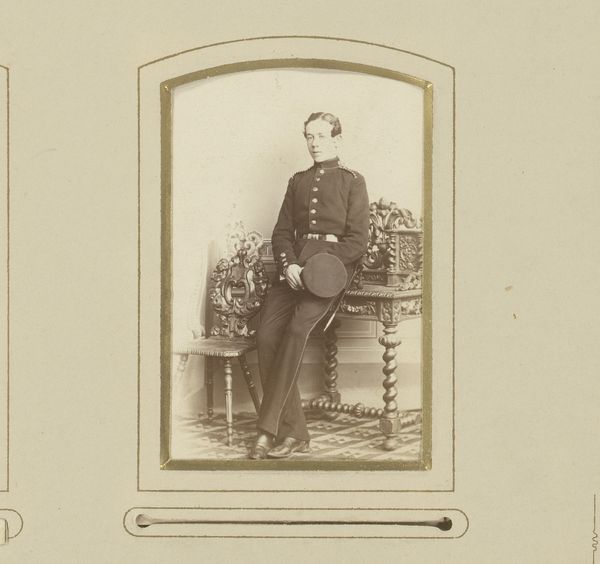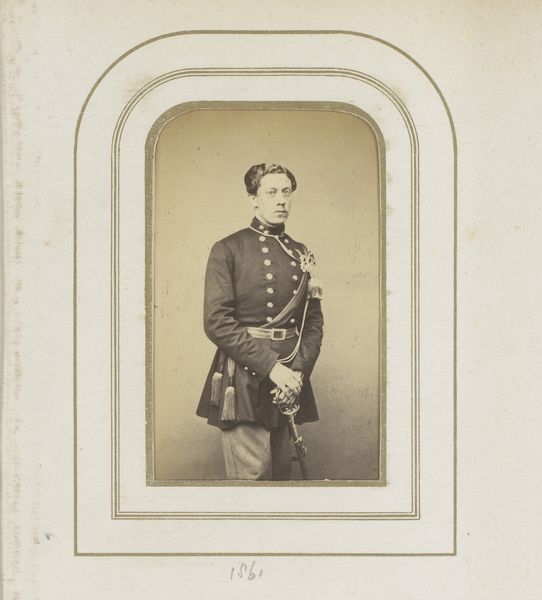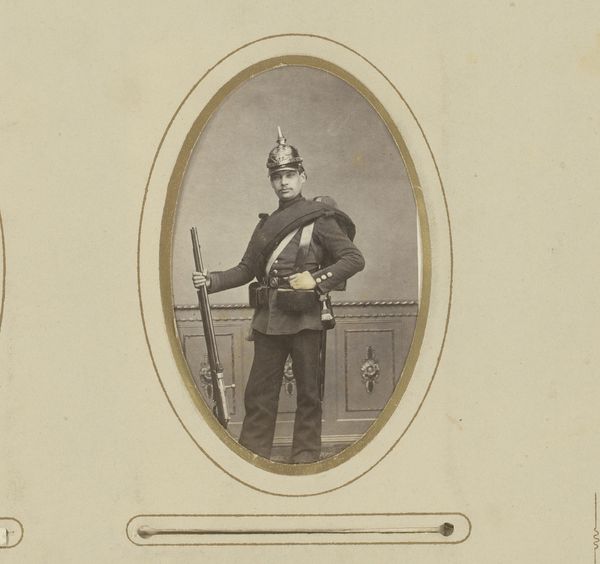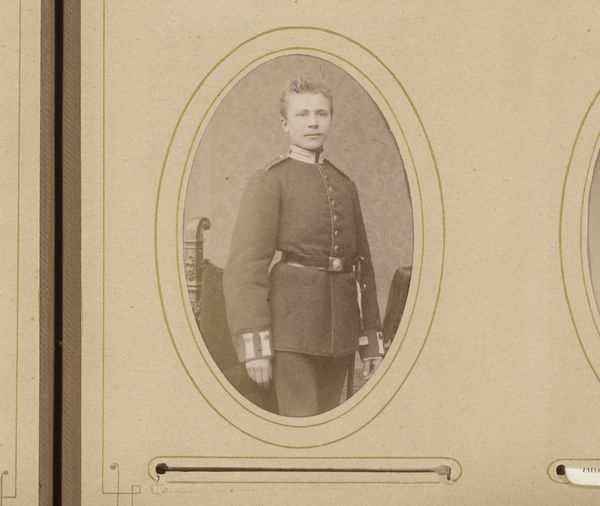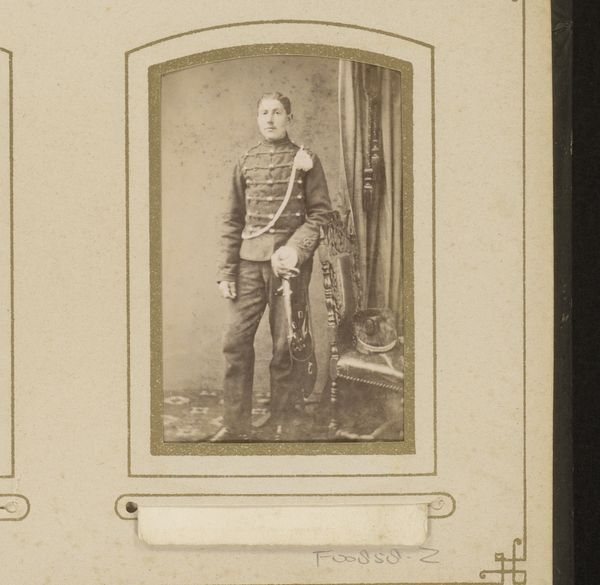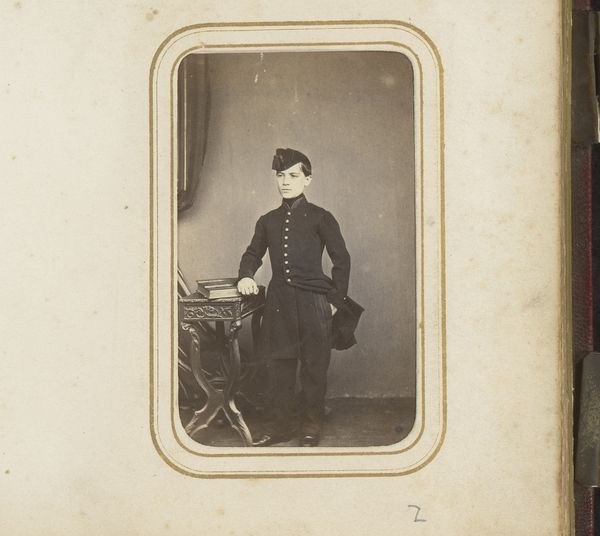
Portret van een man in jagerskostuum met een jachtgeweer c. 1860 - 1880
0:00
0:00
photography
#
portrait
#
photography
#
historical photography
#
historical fashion
#
19th century
#
genre-painting
#
realism
Dimensions: height 84 mm, width 51 mm
Copyright: Rijks Museum: Open Domain
Curator: Here we have a photograph titled "Portret van een man in jagerskostuum met een jachtgeweer," placing the subject, quite literally, in the costume of a hunter with a hunting rifle. The photographic print by Wegner & Mottu is dated circa 1860 to 1880 and now resides at the Rijksmuseum. Editor: What strikes me immediately is the man's gaze; he looks so remarkably nonchalant, almost bored, given he is supposedly in pursuit of wild game, equipped and ready for the hunt. The monochrome and the clarity offer a captivating study in realism, the symmetry of the rifle contrasting with his soft attire. Curator: It's precisely this tension that piques my interest. Examining the materials used and the means of its production tells us much about class and leisure. Here is a man embodying an almost performative masculinity. Editor: It is a performance, and quite contrived at that. Think about the composition; he's centrally positioned, almost rigidly so. He's the main subject, but in the way he has been depicted and with what he's holding, he appears not as some triumphant master, but an artificial pose with his only task to present the *appearance* of something. It is a formal observation of class posing. Curator: True, but think about how photography was becoming increasingly accessible to the middle class during this era. Commissioning such a portrait becomes a way of participating in certain social constructs, specifically notions tied to land ownership, leisure time, and power which are historically afforded mostly to only land-owning wealthy. Editor: It all comes down to the image. If we follow a Semiotic approach, the gun isn't just a gun. It is a symbol, a signifier loaded with societal connotations about status and authority, which transforms this study in contrasts. And with it also highlights this artificial notion of performance. Curator: Exactly, we see the interplay between what is captured, which is realism, and the implied aspirations of the subject who might otherwise be removed from hunting. Photography flattens access and turns lived experience into visual spectacle, in a controlled format. Editor: It prompts reflection. Is he genuinely connected to hunting, or merely adopting the attire for the symbolic status, turning nature itself into a commodity to be owned and controlled? The lack of emotional charge creates ambiguity. It all leads back to how the photographer decided to showcase this subject and highlight elements from a distance. Curator: Yes, it prompts these dialogues about what and who constitutes privilege and visibility in a fast-changing society. This study reveals that tension using what was already there. Editor: For me, it lays bare the power dynamics inherent to visual language, both those displayed and unstated.
Comments
No comments
Be the first to comment and join the conversation on the ultimate creative platform.

